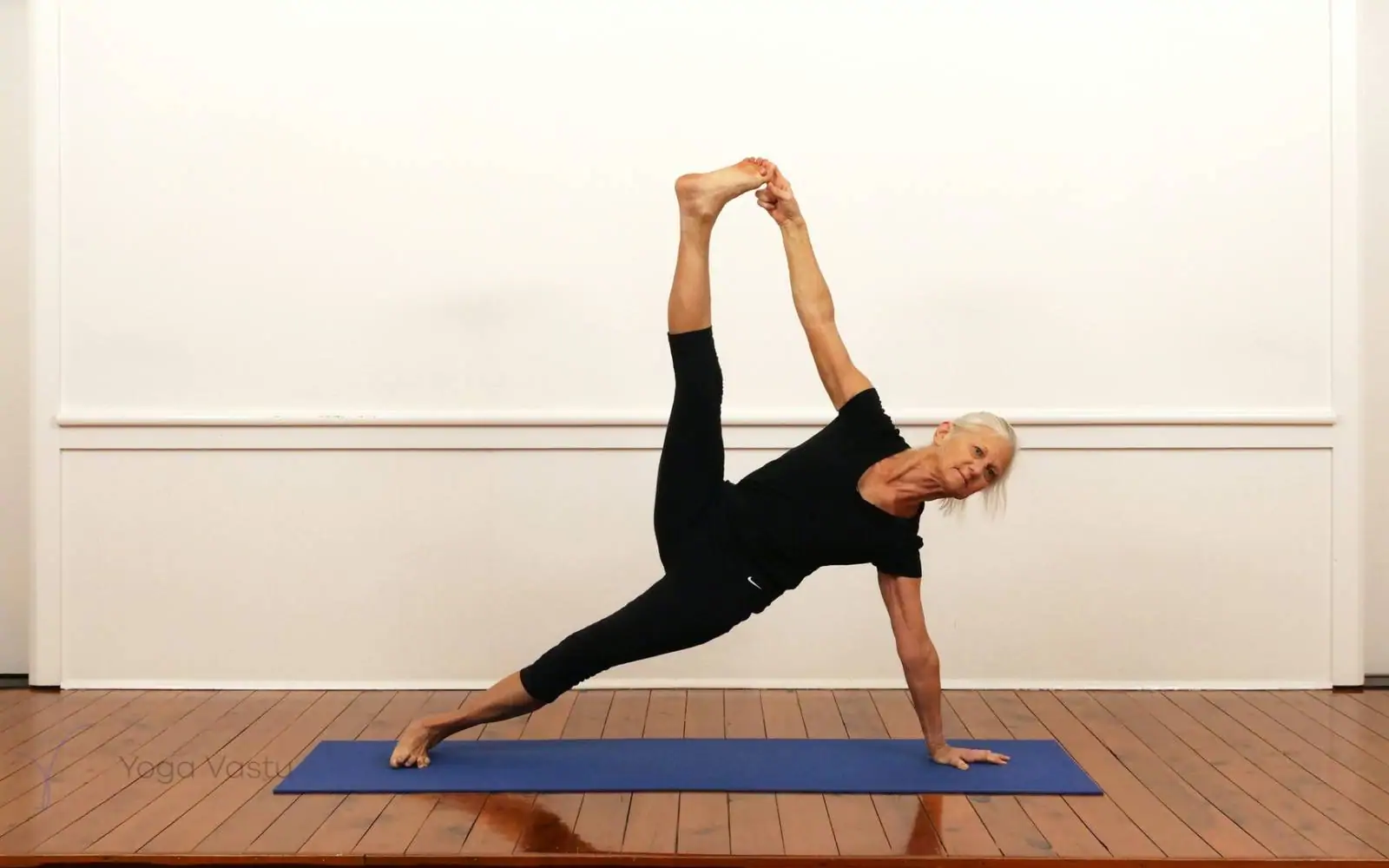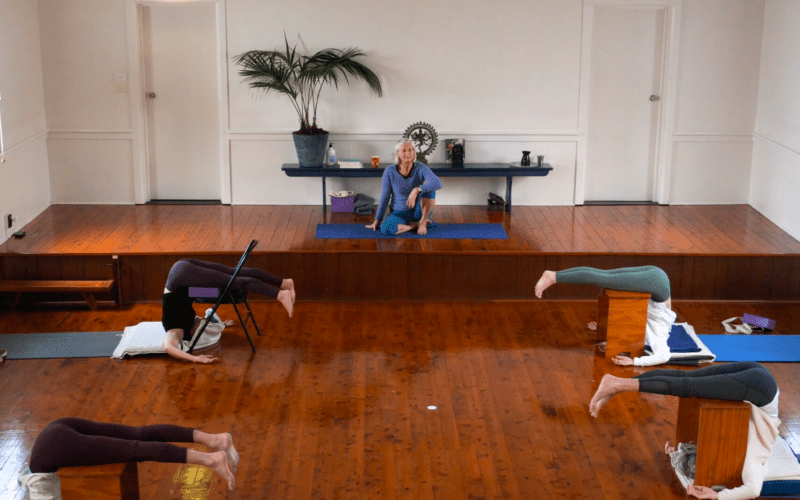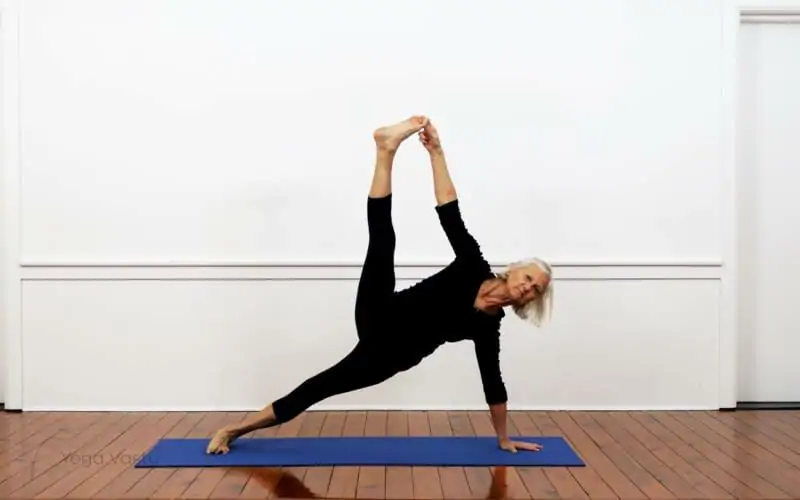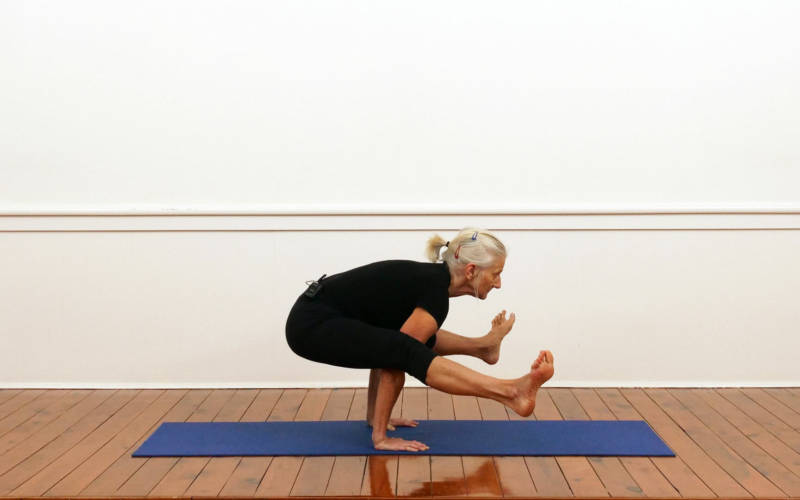How to perform Side Plank Pose II
Start in Plank Pose or Adho Mukha Svanasana. Keep your right hand strongly rooted and rotate onto the outside of your right foot as you shift your body into a diagonal line. Lengthen through the crown of your head and activate your core as you raise your left leg and reach your left hand to meet it. Use a belt if necessary.
What is Vasisthasana II?
The second variation of Vasisthasana or Side Plank Pose. It is an asymmetrical posture, aimed at strengthening your wrists, arms, and shoulders. Moreover, it is known to improve your sense of balance and increase your endurance. This version is more complicated as lifting your leg up can prove to be an additional challenge to your sense of balance, strength, and flexibility.
As you hold in this posture, your weight is supported solely by your foot and hand. If this proves to be too strenuous, you can place the knee of your supporting leg onto the floor. This will make balancing easier and will take a considerable amount of strain off your wrist. Go at your own pace: beginner students tend to have weaker and more fragile wrists, and strength needs to be accumulated gradually to prevent serious injuries.
Your hips lift high up off the floor. As you go to lift up your leg, make sure your body doesn’t twist or sink downwards and that your hips remain active. Eventually, you should be able to maintain your lifted leg in a steady position. However, this can prove too difficult if you lack the necessary core strength or hamstring flexibility. For this reason, it is advised that some students use a belt to help them stabilise the leg and get their bodies used to staying in this pose.
When to use Vasisthasana II?
As an asymmetrical posture, Vasisthasana is meant to be repeated on both sides. This will highlight the imbalances in your body and will give you a clue as to which side needs to be addressed with more care.
It is typically paired with such poses as Phalankasana and Adho Mukha Svanasana and is used during an intense and dynamic arm-strengthening sequence. Good ways to prepare yourself for this pose is by working on the strength and mobility in your wrist joints through performing exercises containing Paschima Namaskar or by trying out different variations of Half Uttanasana.





